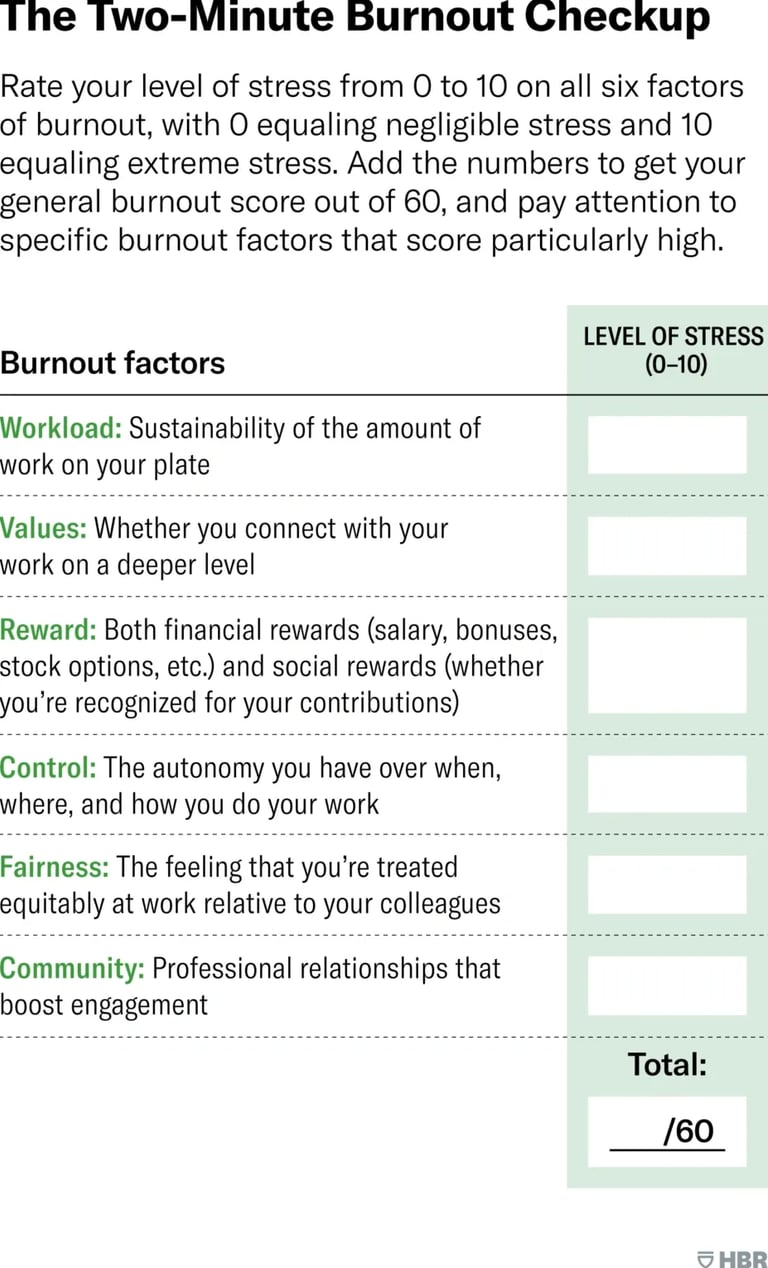Burnout: 6 Reflections for Leaders to Combat Team Burnout
How leaders can support teams experiencing burnout.
POVLEADERSHIP


I remember the first day of my first major 9-to-5, W-2 job out of college vividly. I remember the second day vividly as well, because I had stayed up until 2am with my day-1 project assignment, which led to a very groggy, fear-filled second day with blood-shot eyes wondering if my boss would think poorly of my work. Without knowing at the time, this was the start of my rollercoaster journey toward burnout.
Yes, burnout. One word that can stir overwhelming sentiments of frustration and despair. Burnout has surged from the pandemic, yet it is not a new plague, and it continues to be a critical matter that persists and cripples until transformation occurs from the top. Burnout can lead to decreased productivity, higher turnover rates, increased anxiety, and increased healthcare costs for individuals and companies. The World Health Organization states depression and anxiety cost the global economy US$ 1 trillion each year predominantly from reduced productivity.
In addition to the WHO, Stanford Researchers, the Journal of American Medical Association and the Maslach Burnout Inventory have found evidence that the workplace is the root of burnout and employees' health.
We at MTM are so passionate about work enablement and human capital, it’s vital we seek resolution to overcome the impediments to not only achieve company KPIs, but most importantly human progress, well-being, and success. It seems the majority of content regarding burnout focuses on what individuals can do for themselves, yet we feel strongly compelled to specifically call attention to the vital role that leaders need to play in overcoming burnout and safeguarding the health of individuals. From our own personal experience with management and burnout, we share six important areas to deeply reflect on where you as a leader can make positive transformation with your teams.
Leaders, reflect upon…
How you pay attention to signs of and common reasons for burnout.
Lack of motivation/enthusiasm for work
Decreased performance previously performed well
Increases in sick days for stress-related illnesses
Unmanageable workload or unreasonable time pressure
Unfair treatment in the workplace
Lack of role clarity
Lack of communication and support from their manager
2. How you shape culture and tone as a supportive work environment.
Does the team rally for and support each other regularly?
Do you burn the midnight oil yourself, making it a badge of pride to your team?
Are you helping to establish purpose and meaningful goals for each team member?
Do you ask for help yourself, and show vulnerability?
Are you celebrating, recognizing and rewarding the team for not only the major milestones achieved, but also everyday achievements?
3. How you support and create open and quality communication.
Do you facilitate times for meaningful connection: in-person, non-work related, boosting team morale?
Do you have supportive channels for team members to share feedback?
Do you know each team member’s communication style that best facilitates clarity and progress? Do you uncover their appreciation language to later recognize?
Do you engage your team in decision making?
What is the quality of 1:1 meetings to deeply listen to your direct reports, hear their needs/concerns, what they need to succeed/thrive, and ask the right questions to reveal paths toward improvement?
Are you asking: How can I better support you? What is unclear or blocking your progress? What would you change about your workload? What could our team do differently?
4. How you support and create work-life balance.
Do you show action when team members need to take a break? Avoid simply saying “take time off”, make it happen for your team - coordinate WHF days, flexible work hours, days of no internal meetings, team-building/volunteer days, take your 1:1 meetings as a walk, and give time off after major projects/deadlines, as a few suggestions.
Don’t be afraid to ask your team how they work best. Gallup found that employees are 43% less likely to experience high levels of burnout when they have a choice in what tasks to do, when to do them and how much time to spend on them.
Do you refrain from contacting team members when they are on PTO and instead coordinate ahead with out-of-office plans for you and the rest of the team to cover?
5. How you protect your team.
Do you manage up and go to bat for your team - advocating and championing their work/ideas?
Do you prioritize, delegate and set deadlines accordingly, avoiding the ‘everything is always on fire’ atmosphere?
Do you avoid harmful and costly micromanagement? The negative impacts are so intense that it is labeled among the top three reasons employees resign.
Do you avoid overextending and overloading high-performers?
Do you initiate and shepherd career development discussions rather than wait for the individual to surface them?
6. How you organize for yourself and the team.
Do you mitigate chaos, confusion and interruptions flooding down to your team by filtering, organizing and prioritizing information and directives appropriately.
Do you avoid yanking your team’s focus and energy around more than you can control, like a child with a laser pointer playing with a cat?
Do you have the tools and resources accessible for the team to succeed?
Are you attuned to the strengths and feedback from your team to then align responsibilities and projects for maximized potential? Gallup found that employees who have the opportunity to do what they do best are 57% less likely to frequently experience burnout.
Burnout is costly in a myriad of ways. As leaders, and as more than marketers, it’s imperative we create environments for healthy, sustainable, rewarding work. As you reflect upon the role you have and can play for the health of your team and company missions, know that you are not alone. MTM encourages continuous leadership transformation and we are a resource to guide success for you and your team. We’ve got your back.
Additional resources for leaders combating burnout:


